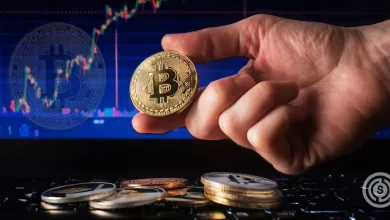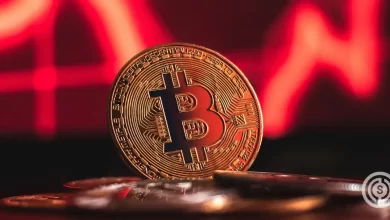Bitcoin’s anticipated halving: A tale of Promise and Pragmatism

The imminent arrival of Bitcoin’s halving event, a fundamental aspect of its monetary policy, has garnered considerable attention and anticipation within the cryptocurrency community. Unlike previous halvings, characterized by fervent speculation and price volatility, the impending halving is poised to unfold with a sense of pragmatism and tempered expectations.
Prior to each successive halving, the industry saw a steady increase in BTC transactions; 2024 will witness the highest daily transaction volume and more spectacular surges in activity than previous runs-up. Furthermore, despite the expected increase in transaction volume with each new cycle, this year’s activity appears to defy some trends.
Bitcoin halving, a programmed event that occurs approximately every four years, aims to reduce the creation rate of new Bitcoins by half. This scarcity mechanism is integral to Bitcoin’s deflationary monetary policy, ensuring a finite supply of 21 million coins and imbuing the cryptocurrency with store-of-value properties akin to digital gold. Historically, halving events have been catalysts for significant price rallies, driven by speculation, media hype, and FOMO (fear of missing out) among investors.
However, the narrative surrounding Bitcoin’s upcoming halving differs from previous iterations, characterized by a shift towards pragmatism and rationality. The long-term prospects of Bitcoin as a hedge against inflation and economic uncertainty continue to inspire optimism, but the immediate aftermath of the halving has tempered expectations for a meteoric price surge. Market participants, including institutional investors, traders, and analysts, are adopting a more measured approach, recognizing the nuanced dynamics at play in the cryptocurrency market.
Several factors contribute to the subdued sentiment surrounding Bitcoin’s impending halving. The maturation of the cryptocurrency market and the increasing sway of institutional investors, whose investment decisions are more calculated and analytical in nature, are the most significant. Institutional adoption of Bitcoin as a portfolio diversification tool and a hedge against macroeconomic risks has bolstered confidence in its long-term value proposition, mitigating the speculative fervor typically associated with halving events.
Researchers conducted considerable research and analysis on the effects of prior halvings on Bitcoin’s price dynamics, resulting in a more sophisticated understanding of their impact. While halving events have traditionally coincided with price increases, their amount and timing vary depending on a variety of factors such as market sentiment, investor activity, macroeconomic conditions, and geopolitical developments. As a result, market players are exercising prudence and limiting their expectations appropriately, taking into account the cryptocurrency market’s inherent risks and complexity.
Nevertheless, the fundamental principles underpinning Bitcoin’s scarcity model and its value proposition as digital gold remain intact. With central banks worldwide engaging in unprecedented monetary stimulus measures in response to the COVID-19 pandemic, concerns about fiat currency debasement and inflationary pressures have heightened, driving demand for alternative store-of-value assets like Bitcoin. In this context, the halving event serves as a sharp reminder of Bitcoin’s deflationary supply curve and its ability to emerge as a robust and anti-fragile asset during times of economic turmoil.
In conclusion, Bitcoin’s upcoming halving represents a milestone in its evolutionary journey, underscoring its resilience, scarcity, and growing institutional acceptance. Despite the subdued fervent speculation and price volatility of previous halving events, the underlying narrative of Bitcoin as digital gold and a hedge against macroeconomic risks remains compelling. As the cryptocurrency ecosystem continues to mature and evolve, the halving event is a testament to Bitcoin’s enduring relevance and potential to reshape the global financial landscape.



